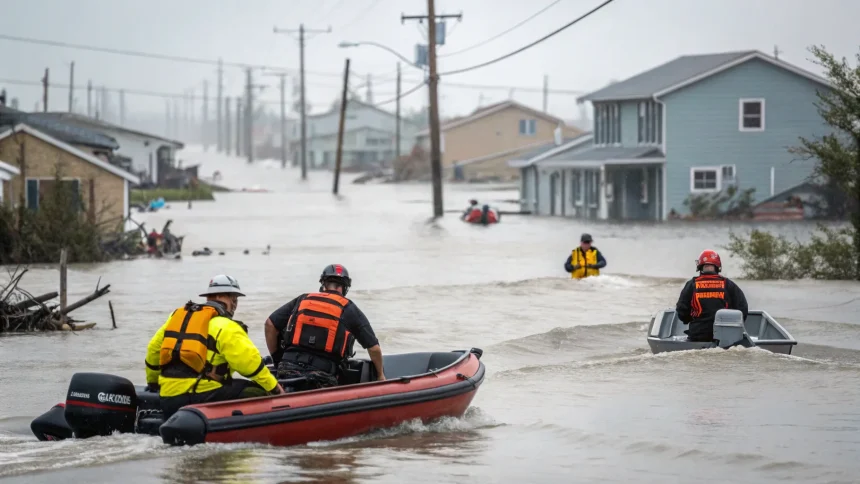First responders in Alaska have launched an extensive rescue operation following severe flooding caused by the remnants of Typhoon Halong. The powerful storm system has destroyed several homes and prompted emergency services to conduct dozens of rescue missions across affected areas.
The typhoon’s remnants brought destructive winds and heavy rainfall to the region, causing flash floods that washed away residential structures and threatened local communities. Emergency teams have been working around the clock to reach stranded residents and assess damage in hard-hit areas.
Widespread Destruction and Rescue Efforts
Local authorities report that multiple homes have been completely washed away by raging floodwaters, leaving families displaced and communities devastated. The exact number of destroyed structures remains unclear as assessment efforts continue in challenging conditions.
Rescue teams have successfully completed dozens of operations to evacuate residents from dangerous situations. These efforts have involved:
- Helicopter evacuations from isolated areas
- Boat rescues in flooded neighborhoods
- Emergency shelter establishment for displaced residents
“Our priority is ensuring the safety of all affected residents,” said a spokesperson for the Alaska emergency management team. “We’re utilizing every available resource to reach people in need.”
Weather System’s Unusual Path
Meteorologists note that while Alaska occasionally experiences the effects of Pacific storms, the intensity of Halong’s remnants has been particularly severe. The typhoon, which initially formed in the western Pacific, traveled an unusual northern route before its remnants reached Alaska.
The storm system brought rainfall totals exceeding normal monthly averages in some areas, overwhelming local infrastructure and natural drainage systems. Rivers and streams quickly rose above flood stage, catching some communities with little warning.
“This is one of the most significant flooding events we’ve seen in recent years,” noted a local weather service meteorologist. “The combination of heavy rain on already saturated ground created dangerous conditions very quickly.”
Ongoing Response and Recovery
State officials have activated emergency protocols and requested additional resources to support affected communities. The Alaska National Guard has deployed personnel and equipment to assist with evacuations and deliver emergency supplies to isolated areas.
Damage assessment teams are beginning to document the destruction as floodwaters recede in some locations. Early estimates suggest the recovery will require significant resources and time, particularly in remote communities where access remains limited.
Local authorities have established emergency shelters for displaced residents, with community organizations providing food, clothing, and other essential items. Medical teams are also on standby to address health concerns related to exposure and contaminated water.
As rescue operations continue, officials urge residents in affected areas to follow evacuation orders and avoid attempting to return to damaged properties until safety assessments are complete. The forecast indicates improving weather conditions in the coming days, which should assist recovery efforts across the region.









